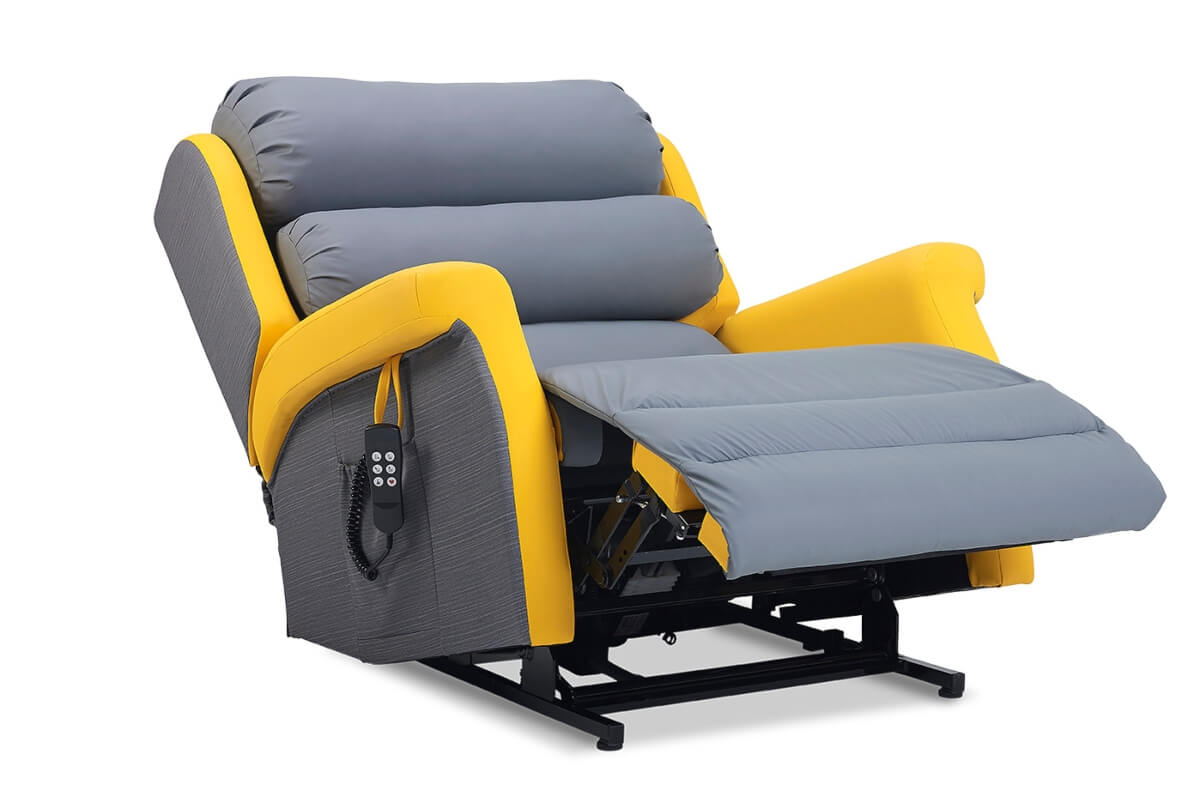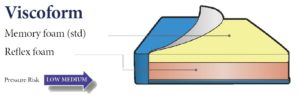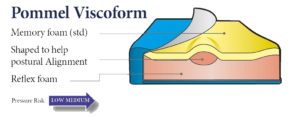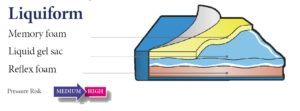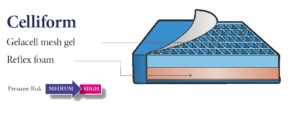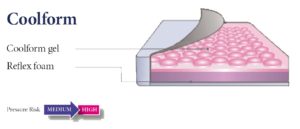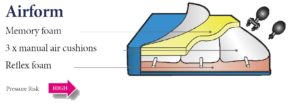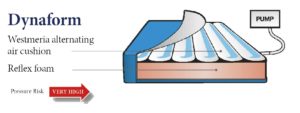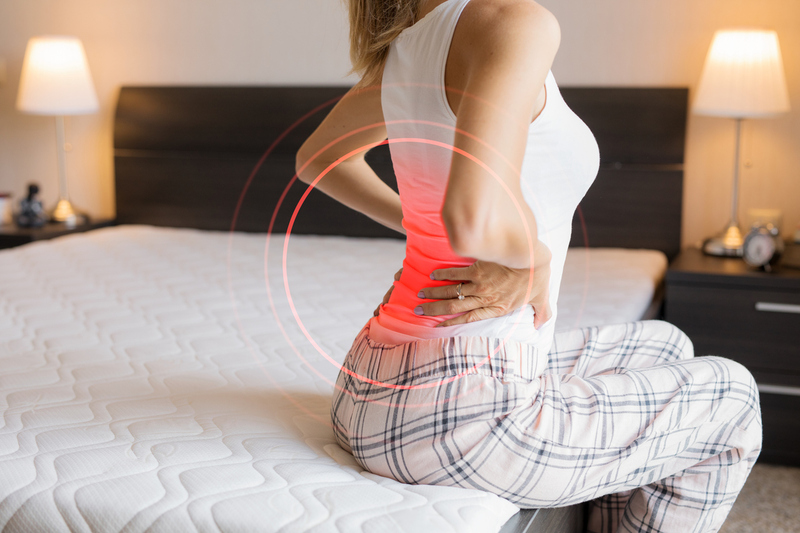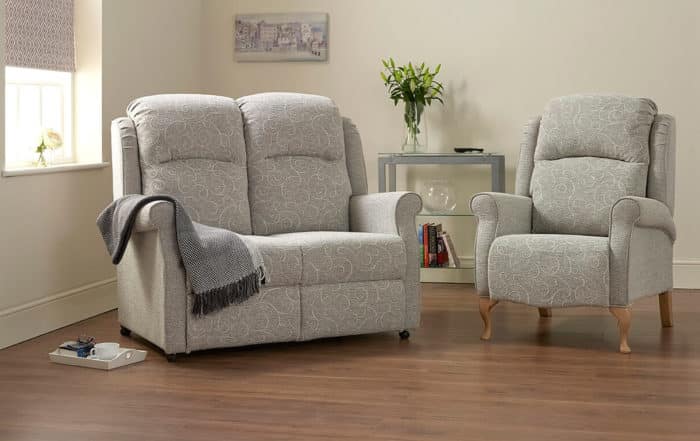How to Relieve Pressure Sores With a Recliner Chair
Social Links
For those of us who lead busy lives, there’s nothing better than relaxing back into a comfortable chair at the end of a long day. For those of us who can’t get around as much, there’s nothing worse than being stuck all day in a chair that’s uncomfortable or lacks support.
According to the NHS, the average UK adult spends about 9 hours a day sitting, and for those with limited mobility, that number can be even greater. So it makes sense that what we sit in should provide the maximum amount of support and comfort – especially when we consider the potential health consequences of a prolonged period of time in an ill-fitting chair.
What are pressure sores?
Previously called bed sores or ulcers, pressure sores are just as likely to occur in someone who spends long periods of time sitting in the same position. Damage to the skin and underlying tissue is caused by sustained pressure on a small area, often in combination with shear (where the skin is rubbed or stretched) or friction.
It most commonly occurs in places where bones are close to the skin, such as in the heels, lower back, buttocks, elbows, ankles and hips. Added pressure restricts blood flow and therefore oxygen to the area, leading to tissue damage and potential tissue death. Poor nutrition, dehydration, obesity, maceration (when the skin is weakened by being damp) and being underweight can all contribute to the development of sores.
What are pressure relief recliners?
A pressure relief recliner is a chair specifically designed to prevent pressure sores by evenly distributing the body’s weight. A made-to-measure chair positions the body so the head, back, arms, legs and feet are all supported, maximising the surface area in contact with the chair and preventing pressure build up in any one area.
Pressure relief chairs come with supportive features such as contoured back and padded arm rests, and the pressure relieving cushion seats are made with air mats, gel pads or memory foam. For those who have trouble adjusting their position on their own, the reclining feature means that it can be easily altered with the pull of a lever or the touch of a button.
Our pressure management seat options
At Mobility Furniture Company, we offer a large range of recliner chairs and settees, all of which can be customised with a pressure relief cushion seat. You should choose your level of support based on your lifestyle and mobility level*:
1. Low to medium
For those with good posture and mobility who are often seated for more than an hour at a time, we recommend our Viscoform cushion with its high-density foam base. The large surface area reduces pressure and the memory foam top provides stability and comfort.
For back problems, the Pommel Viscoform is specially shaped to help postural alignment.
2. Medium to high
Ideal for those who sit for long periods of time, our liquid gel cushions help to dissipate heat, keeping the seat cool and fresh.
Our Liquiform option comes with a memory foam top and is ideal for those with little fatty tissue, while the Celliform’s grid design contours in response to the transfer of weight and is ideal for those at higher risk of sores and shear forces.
Coolform is also recommended for high-risk users, as its medical grade silicone gel adapts to the body’s shape and temperature.
3. High
For those who have a good postural position but are unable to change it easily, our Airform seat features three air cushions with a memory foam top, so that pressure points can be adjusted manually.
4. Very high
For those with a history of pressure sores or at very high risk of developing them, where the highest priority is to prevent further pressure damage. Our Dynaform cushion uses an electric supply to continually change the air levels in its cells, preventing pressure build up and allowing the flow of oxygen to the joints and muscle tissues.
Who can benefit from a pressure relief recliner?
Being able to change position is critical in preventing sores, as the release of pressure created by the movement allows blood to flow back to constricted areas. Power recliners can be operated with a remote control, making them an ideal choice for those living with limited mobility or chronic pain.
As well as helping to prevent pressure sores, the elevation of the legs provided by a reclining chair can improve circulation, which in turn decreases fluid retention, alleviates varicose veins and cellulitis and encourages healing. This also makes it a good option for those impaired by short-term immobility, such as those recovering from injury or surgery.
The Bottom Line
Independent Living estimates that 700,000 people in Britain are affected by pressure ulcers each year, costing the NHS more than £3.8 million every day. Perhaps that’s because tissue damage starts near the bone and spreads outwards towards the skin, making it difficult to detect until the damage has been done.
Ideally, anyone sitting for long periods of time should change their position every two hours – but that’s not always possible for people with limited mobility, so having a chair that can do it for us makes sense. We all know the value of a good bed and mattress, and considering how much time we spend sitting, shouldn’t we expect the same amount of support and comfort from what we sit on?
*This website contains general medical information. The medical information is not advice and should not be treated as such. Read our full Medical Disclaimer here.
*This website contains general medical information. The medical information is not advice and should not be treated as such. Read our full Medical Disclaimer here.
